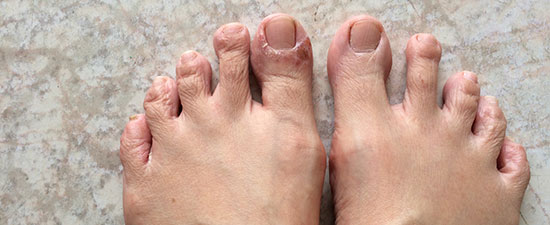Michael Dumas, 17, was diagnosed with cutaneous larva migrans, a skin condition caused by larvae from animal hookworms.
We’re all aware of the beach hazards that lurk in the ocean, like sharks, stingrays, and jellyfish, but we feel safe on the sand. Now there’s cause for caution on the dry side of the beach.
Michael Dumas, a teenage boy from Tennessee, embarked on an evangelical mission trip to South Florida. In between saving souls, he and a dozen or so traveling companions frolicked in the sand at Pompano Beach. We mean “in the sand” literally, because Michael’s friends buried him in the sand up to his neck, just for the pure fun of it.
What are the symptoms of hookworms in humans?
A day after Michael returned home, his mother Kelli noticed a sprinkling of small red bumps on Michael’s skin. As Kelli reported to the Washington Post, at first she thought the bumps were mosquito bites. However, after a couple of days, Michael’s “whole backside” was covered with the red bumps. Ultimately, most of Michael’s feet, legs, and buttocks were covered by a red itchy rash. This is a symptom of a full-body invasion launched by parasitic larvae known as hookworms.
There are two varieties of hookworms, human and animal
The human hookworm is an intestinal parasite. When human hookworms invade a person’s body, they head to their victim’s intestines. There they cause abdominal pain, diarrhea, a decreased appetite, and weight loss.
Michael and three of his beach buddies were ultimately diagnosed as having cutaneous larva migrans, a condition caused by larvae from animal hookworms.
The human body is not a hospitable environment for the animal variety of hookworm larvae
Once inside a human host, the animal hookworm larvae never make it to their goal. Instead of reaching a human host’s intestines, these hookworms larvae merely wander around just under the person’s skin. Their movements under the skin can be both seen and felt. Yikes. But they’re unable to mature and reproduce. Within several weeks, the human body’s defense mechanisms will naturally kill off the parasitic larvae.
Michael’s case was extraordinarily severe. In addition to the standard symptoms, his hookworm infestation caused a serious staph infection. He is currently under intensive treatment for both the larva migrans and the consequent staph infection. His family hopes that he’ll be able to attend his brother’s wedding, currently scheduled for this coming August 11.
“Everyone knows to wear shoes on the beach because you can get parasites”
When Kelli Dumas reported the incident to Broward County health officials, her concerns were dismissively brushed off. The Broward County Health Department responded: “Everyone knows to wear shoes on the beach because you can get parasites”. In a Facebook posting which went viral, Kelli said “I assured them everyone does NOT KNOW THAT!!” (In response to a follow-up inquiry from the Post, Broward County officials said that an investigation had begun.)
There’s not really that much to investigate. Hookworms spread when animals or humans infected with the parasite defecate in sand or soil. Because the feces carry the parasite’s eggs, the contaminated sand becomes a fertile source of infestation. In Michael’s case, a dog owner may have covered his or her pet’s feces with beach sand, instead of removing it from the beach. In any event, Michael’s full-body immersion in contaminated sand exposed just about all his skin to the larvae infestation.
The Center for Disease Control (CDC) recommends “not to walk barefoot in areas where hookworm is common and where they may be fecal contamination of the soil”. The CDC also recommends “not to ingest the soil.” (In our opinion, the CDC’s advice to refrain from eating contaminated dirt should be completely unnecessary.)
If you’re having trouble with your feet, hookworms or no, we are here to help. Please don’t hesitate to make an appointment with University Foot and Ankle Institute. Our nationally recognized podiatrists offer the most advanced foot and ankle care together with the highest success rates in the nation. We are leaders in the fields of research and treatment for all foot and ankle conditions.
For more information or to schedule a consultation, please call (877) 736-6001 or visit us at www.footankleinstitute.com.
Read the full article at: www.washingtonpost.com
- Avoiding Foot and Ankle Overuse Injuries While Dog Walking - July 17, 2023
- What is Floating Toe Syndrome? - June 12, 2023
- Is there a link between gout and heart disease? Studies Say Yes - February 22, 2022

Leave a Reply